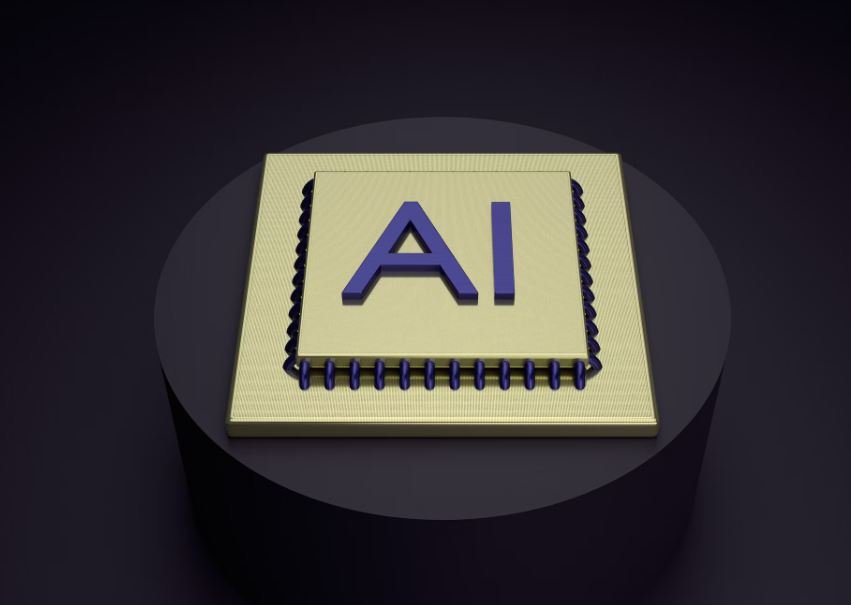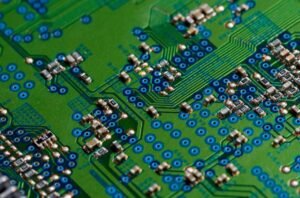OpenAI vs. Open Source
Artificial Intelligence (AI) has become a significant focus of research and development, and two popular approaches, OpenAI and Open Source, have emerged as prominent players. This article explores the differences between OpenAI, a leading AI research lab, and Open Source, a collaborative development model that encourages the sharing of source code.
Key Takeaways
- OpenAI is a research lab that aims to create AGI (Artificial General Intelligence) that benefits all of humanity.
- Open Source is a development model that allows developers to freely access, use, and modify source code.
- OpenAI’s GPT-3 model is a powerful language model that has captured significant attention.
- The Open Source community fosters collaboration and innovation through shared knowledge and resources.
- Both OpenAI and Open Source have the potential to revolutionize technology and society.
Understanding OpenAI
OpenAI, founded in 2015, is a research organization focused on developing and promoting friendly AGI. Their mission is to ensure that AGI benefits everyone, avoiding harmful or concentrated power. OpenAI has gained recognition for its cutting-edge AI models, particularly the Generative Pre-trained Transformer 3 (GPT-3), which can generate remarkably human-like text based on given prompts. GPT-3 has demonstrated its prowess in natural language understanding and generation, fueling excitement and further research in the field of AI.
*OpenAI’s GPT-3 model has 175 billion parameters, making it the largest language model to date.
Exploring Open Source
Open Source is a development approach that allows developers to freely access, use, and modify source code. Open Source projects encourage collaboration and innovation by promoting the sharing of knowledge and resources. Many successful software projects, such as the Linux operating system, have been developed under the Open Source model. Communities built around Open Source projects enable developers worldwide to contribute their expertise, resulting in robust and reliable software solutions.
*The Open Source movement advocates for transparency and community-driven development.
The Clash between Commercialization and Accessibility
One of the fundamental differences between OpenAI and Open Source lies in their respective approaches to commercialization. While OpenAI has made strides in AI research and development, they have also adopted a commercial strategy to sustain their operations. OpenAI offers access to their AI models via APIs, allowing developers and businesses to leverage the power of GPT-3 in their applications. However, this approach limits widespread accessibility to the technology, as it comes with associated costs.
Table 1: OpenAI vs. Open Source
| Aspect | OpenAI | Open Source |
|---|---|---|
| Business Model | Commercial | Free and Open |
| Intellectual Property | OpenAI-owned | Contributors retain rights |
| Development Approach | Centralized research lab | Decentralized community |
The Impact on Innovation
OpenAI’s commercialization strategy has raised concerns about the future availability and affordability of advanced AI technologies. Critics argue that the high cost associated with accessing OpenAI’s advanced models may hinder the democratization of AI and limit innovation to only those who can afford it. Open Source, on the other hand, embraces the ethos of inclusivity and knowledge sharing, empowering developers worldwide to contribute to the development of cutting-edge technologies without financial barriers.
*Open Source enables developers to build upon existing knowledge and drive innovation forward.
Table 2: Pros and Cons
| OpenAI | Open Source |
|---|---|
| Pros | Pros |
| – Access to advanced AI models | – Widespread accessibility |
| – Continuous research and development | – Collaborative innovation |
| Cons | Cons |
| – Limited accessibility due to cost | – Quality control challenges |
| – Potential concentration of power | – Slower development pace |
The Way Forward
Both OpenAI and Open Source have made significant contributions to the field of AI and software development. While OpenAI’s focus lies in cutting-edge AI research and commercialization, Open Source acts as an enabler for collaborative innovation. A balance between commercialization and accessibility is crucial to ensure that the benefits of AI and advanced technologies can be experienced by a wider audience while fostering continuous development and progress.
*Open Source has revolutionized the way software is developed, promoting transparency and collective problem-solving.
Table 3: Future Outlook
| OpenAI | Open Source |
|---|---|
| Focus on AGI research and development | Continued collaboration and innovation |
| Commercial partnerships and expansion | Increased adoption and usage |
| Addressing concerns of accessibility | Overcoming scalability challenges |
In summary, OpenAI and Open Source present distinct approaches to AI research and development. While OpenAI focuses on cutting-edge AGI research with a commercial strategy, Open Source encourages collaboration and innovation through knowledge sharing and widespread accessibility. Both approaches have their merits and play unique roles in shaping the future of technology.

Common Misconceptions
Misconception 1: OpenAI and Open Source are the same thing
One of the most common misconceptions is that OpenAI and Open Source refer to the same concept. OpenAI refers to an artificial intelligence research laboratory and company, while Open Source is a term used to describe software that allows its source code to be freely available and modifiable. Although OpenAI has released some of its models and tools under open source licenses, they are not synonymous terms.
- OpenAI and Open Source are separate concepts.
- OpenAI is a company, while Open Source refers to software licensing.
- OpenAI has released some of its models and tools under open source licenses.
Misconception 2: OpenAI has complete control over open source AI projects
Another misconception is that once OpenAI releases an open source AI project, they have complete control and authority over its development and use. In reality, open source projects allow for community involvement and collaboration. While OpenAI may have influence over the project’s direction, it does not exercise absolute control.
- Open source AI projects encourage community involvement.
- OpenAI’s influence over open source projects is not absolute.
- Decisions about an open source AI project are usually made collectively by the community.
Misconception 3: Everything OpenAI develops is open source
It is important to note that not everything developed by OpenAI is open source. While OpenAI has released several significant projects as open source, such as the GPT-2 language model, they also have proprietary projects and technologies that are not available under open source licenses. OpenAI carefully chooses which projects to make open source based on their goals and strategic considerations.
- OpenAI has released some significant projects as open source.
- Not all of OpenAI’s developments are open source.
- OpenAI considers strategic factors when deciding which projects to make open source.
Misconception 4: OpenAI does not benefit from open source projects
Contrary to popular belief, OpenAI can benefit from open source projects. By making certain tools and models open source, OpenAI can tap into the collective expertise of the community, gather feedback, and refine their technologies. Open source projects often thrive when there is active community participation, resulting in improved quality and performance.
- OpenAI can gain valuable insights and feedback through open source projects.
- Community involvement in open source projects can lead to improved technology.
- Open source allows OpenAI to benefit from collective expertise.
Misconception 5: OpenAI’s open source projects are fully mature and production-ready
Lastly, it is important to recognize that not all of OpenAI’s open source projects are fully mature or ready for production use. While OpenAI strives to release high-quality tools and models, some open source projects may still be in the experimental stage or require further development before they can be used in real-world applications.
- Not all open source projects from OpenAI are production-ready.
- Some open source projects may still be in the experimental stage.
- OpenAI works on improving their open source projects over time.

Artificial Intelligence Market Size
The global artificial intelligence market is expected to reach $190.61 billion by 2025, with a CAGR of 36.62% during the forecast period. This growth is driven by advancements in machine learning algorithms and the increasing adoption of AI across various industries.
| Year | Market Size (in billion USD) |
|---|---|
| 2016 | 16.06 |
| 2017 | 21.46 |
| 2018 | 24.66 |
| 2019 | 27.23 |
| 2020 | 39.90 |
| 2021 | 58.98 |
Top OpenAI Models
OpenAI has developed several impressive models that showcase the power of artificial intelligence in various domains. Here are some notable examples:
| Model | Description | Release Date |
|---|---|---|
| GPT-3 | A language processing model capable of generating human-like text. | June 2020 |
| CODGPT | An AI model trained on code that can assist with programming tasks. | February 2021 |
| DALL-E | An image-generating model capable of creating unique and imaginative visuals. | March 2021 |
Contributions to Open Source Software
Open source software plays a critical role in shaping the AI landscape. Many organizations, including OpenAI, actively contribute to these projects:
| Organization | Contribution |
|---|---|
| OpenAI | Developed and released the Gym toolkit for reinforcement learning research. |
| Facebook AI Research | Contributed to the PyTorch deep learning framework. |
| Google Brain | Released TensorFlow, a popular open-source library for machine learning. |
| Mozilla | Developed Common Voice, an open-source project for building speech recognition technology. |
Advantages of OpenAI
OpenAI offers several advantages that make it stand out in the field of artificial intelligence:
| Advantage | Description |
|---|---|
| Community | OpenAI fosters a supportive community of researchers and developers. |
| Cutting-edge Research | The organization pushes the boundaries of AI through its innovative research projects. |
| Access to Large-scale Models | OpenAI provides access to powerful models like GPT-3, enabling developers to build impressive AI applications. |
The Power of Open Source
Open source software has revolutionized the AI industry, enabling collaboration and innovation. Here are some key aspects:
| Aspect | Description |
|---|---|
| Transparency | Open source projects allow developers to inspect and modify the code, driving transparency and trust. |
| Community-driven Development | The collective effort of developers from around the world enhances the quality and functionality of open source software. |
| Customizability | Users can tailor open source software to suit their specific needs, promoting flexibility and adaptability. |
Concerns around OpenAI
While OpenAI has made significant contributions to the field, some concerns have also been raised:
| Concern | Description |
|---|---|
| Unintended Bias | AI models developed by OpenAI may inadvertently perpetuate biases present in the data they are trained on. |
| Control and Ethics | OpenAI’s models raise questions about who should have control over powerful AI systems and the ethical implications of their use. |
| Economic Disruption | The widespread adoption of AI technologies developed by OpenAI could lead to significant job displacement and economic disruption. |
Impact of Open Source on AI
Open source software has played a crucial role in shaping the development and democratization of AI. Here are some key impacts:
| Impact | Description |
|---|---|
| Rapid Innovation | Open source programs accelerate innovation by enabling developers to build upon existing tools and libraries. |
| Open Standards | Open source projects promote the adoption of common standards, facilitating interoperability and collaboration. |
| Lower Costs | Access to open source software eliminates licensing fees, making AI more affordable and accessible to a wider range of users. |
Investment in AI Research and Development
Investment in AI research and development fuels the growth and innovation in the field. Here’s a breakdown of the major players:
| Organization | Annual AI R&D Expenditure (in million USD) |
|---|---|
| 20,000 | |
| Microsoft | 12,000 |
| Amazon | 9,700 |
| 8,900 |
Summary of OpenAI vs. Open Source
OpenAI and open source software both play crucial roles in the advancement of artificial intelligence. OpenAI’s cutting-edge models showcase the potential of AI technology, while open source enables collaboration, transparency, and rapid innovation. However, concerns remain regarding biases, control, and economic disruptions associated with AI development. Investment in AI research and development continues to grow, reflecting the industry’s commitment to pushing the boundaries of AI technology.
Frequently Asked Questions
OpenAI vs. Open Source
- What is OpenAI?
- OpenAI is an artificial intelligence research laboratory whose mission is to ensure that artificial general intelligence (AGI) benefits all of humanity.
- What is Open Source?
- Open source refers to a collaborative development methodology that enables anyone to view, use, modify, and distribute the source code of a software.
- How is OpenAI different from Open Source?
- OpenAI focuses on AGI research and its responsible development, while open source represents a development approach with no specific focus on AI.
- Is OpenAI’s technology open source?
- OpenAI has released several research papers, APIs, and tools for developers, but not all of their technology is open source.
- Can I use OpenAI’s APIs and tools for free?
- OpenAI offers both free and paid access to their APIs and tools. The availability and pricing may vary depending on the specific service.
- How can I contribute to OpenAI’s research?
- OpenAI encourages collaboration, and you can contribute by participating in their research, providing feedback on their models, or by joining their research team.
- Is OpenAI’s research reproducible?
- OpenAI strives to make their research reproducible by sharing code and models whenever possible. However, not all of their techniques or models may be fully disclosed.
- Are there any ethical considerations associated with OpenAI or open source AI?
- Yes, both OpenAI and open source AI projects raise important ethical considerations, including issues of bias, privacy, and the responsible use of AI technologies.
- Can I modify and redistribute OpenAI’s models or APIs?
- The specific permissions and licensing terms for OpenAI’s models and APIs are determined by OpenAI. You should consult the relevant documentation or contact OpenAI directly for clarification.
- What is the future outlook for the collaboration between OpenAI and the open source community?
- The future collaboration between OpenAI and the open source community is uncertain and may vary depending on OpenAI’s strategic direction and partnerships.




